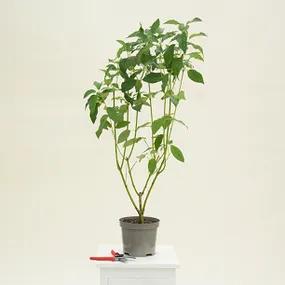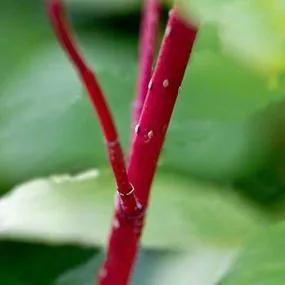What is Dogwood Hedging?
The dogwoods, Cornus species, are all suitable for hedging, especially the wild species, but the ornamental varieties are typically grown for their brightly coloured new bark that gleams like coral all winter.
They are vigorous, versatile shrubs that naturally thrive in wet soils, but are also drought tolerant and will grow on a dry embankment.
- Red and Common dogwood are the cheapest and best for practical, solid, mixed country hedging when grown with hawthorn, hazel, wild roses, and so on.
- The colourful ones below are intended for use as ornamental shrubs. They should be hard pruned every year when they are settled in:
- Elegantissima, Gouchaultii, Midwinter Fire, Sibirica and Spaethii have bright red and/or orange bark.
- Kesselringii (dark purple) and Flaviramea (gold) provide extra variety/contrast.
Cornus Mas, Cornelian Cherry, doesn't have colourful bark, but is attractive as a small, bushy tree with red, edible fruit that can be pickled to improve the flavour. It can be grown as a hedge plant or shrub.
Browse our range of hedging plants, or our more ornamental garden shrubs.
Spacing: Dogwoods in a mixed country hedge go at 3 plants per metre single row or 5 in a double row.
The ornamentals can be spaced looser at 50-60cm apart for neon avenues in winter. They should settle in for about two years, only trim off whippy growth in winter, and then be coppiced close to the ground every year in Spring for the best brightly coloured new bark the following winter.
The planting and delivery season for bareroot Dogwood hedge plants is between November and April.
Your mail order Dogwood plants are delivered by next working day courier.
If there is anything wrong with your plants when they arrive, Contact Us within 5 working days, and our friendly support team will sort it out.
All bareroot plants are covered by our Refund Guarantee, so you can give them a whirl with complete confidence.




 2.webp)
 1.webp)
 Img 1.webp)


.webp)
 3.webp)
 Img 2.webp)
 1.webp)
.webp)